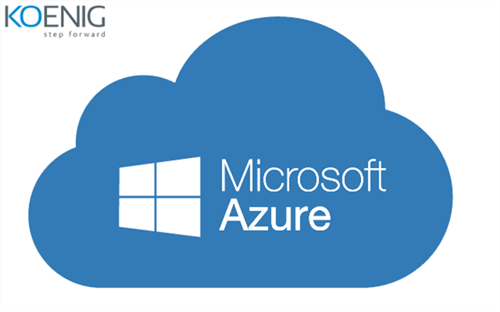
Data engineering includes all the systems, practices and workflows that help develop and build systems for data storage, collection and analysis at a large scale. This domain has vast applications in nearly every industry across the global market. Data engineering is a multi-disciplinary industry where engineers are instrumental in defining data pipelines while collaborating with software developers, data analysts and data scientists.
A data engineer is responsible for creating systems to collect, analyse and transform raw data into usable data for data professionals to understand and process. According to industry trends today, data engineering as a career has a bright and promising future. The dependence on data is growing exponentially as increasing volumes of data are generated each day from a wide range of sources. With more and more companies hiring competent and skilled data engineers, the number of job roles has increased significantly. However, this also means a high level of competition. For this reason, it helps if you know which data engineering interview questions you should prepare for to have a better chance of getting the job you want.
Some of the questions you face will be more fundamental and personal, such as why you want to take up this role or what you understand by data engineering. Others will focus on your understanding of core concepts and applications. Take a look at the data engineer top interview questions you should prepare for before you go for your next interview.
Data Engineer Interview Questions and Answers:
Q. What is data engineering?
Data engineering focuses on implementing data analysis and data collection. Data collected from multiple resources is just unprocessed information. Data engineers transform this bare information into usable information. In other words, data engineering transforms, cleanses, profiles and aggregates large data sets for data scientists and analysts to use.
Q. Why have you chosen Data Engineering as a career?
This question aims to understand the drives and beliefs of an individual who is moving forward in the data engineering domain. This is a subjective and personal answer. Make sure you share your motivations, the insights that your learning has given you until this point, what you like about the domain and what your long-term objectives are.
Q. What are the differences between a data warehouse and an operational database?
This is a common question at the intermediate level. An operational database uses Delete SQL statements, Insert and Update as its standard functionalities, focusing on efficiency and speed. Consequently, data analysis is slightly complex. Meanwhile, data warehouses focus primarily on select payments, aggregations and calculations, making them better suited for data analyses.
Q. What is data modelling?
Data modelling is a process where entire information systems or components are visually represented to demonstrate linkages between data structures and data points. The objective behind data modelling is to showcase the various data types stored and used in a given system, the relationship between multiple data points, their classification, arrangements, features and formats. Data professionals usually model data according to the specific needs of the project or business with varying degrees of abstraction. Data modelling starts when end-users and stakeholders provide information about the objectives. These guidelines are turned into data structures which help in creating concrete database designs.
Q. What are the design schemas available in data modelling?
There are two data model design schemas available for data engineers:
- Snowflake schema
- Star schema
Also Read: What Is a Data Engineer?: A Guide to Pursue As a Career
Q. What are the differences between data engineers and data scientists?
- Data science is a broad research discipline. Its key focus area is data extraction from large datasets and Big Data. A data scientist operates in a large number of fields such as industry, applied scientists and government departments. Every data scientist is focused on the same objective, which is analysing data and deriving relevant insights from it for business objectives.
- Data engineers focus on developing and integrating several components of complex IT and data systems, keeping in mind the business objectives, data required and the final deliverables. Consequently, this results in the creation of highly complex pipelines of data, that carry unstructured, raw data from multiple sources and channel them to a single larger database or structure for proper data storage.
Q6. What are the differences between structured and unstructured data?
Structured and unstructured data differ on several parameters.
|
Parameter |
Structured Data |
Unstructured Data |
|
Storage |
Data is stored in a DBMS |
Unmanaged file structures store the data |
|
Standard |
ADO.net, ODBC, SQL |
STMP, XML, SMS, CSV |
|
Integration Tool |
ELT (Extract, Transform, Load) |
Batch processing or manual data entry |
|
Scalability |
Scaling is difficult |
Scaling is comparatively easy. |
Q. What is Hadoop Streaming?
Streaming is a Hadoop functionality that helps in creating a map, reducing jobs and submitting them to a particular cluster.
Q. What does HDFS stand for?
The full form of HDFS is Hadoop Distributed File System. Hadoop works with several scalable file systems such as HFTP FS, S3, HDFS and FS. HDFS is made using the Google File System, which is so designed that it runs easily on large clusters in a computer system.
Q. What is a block and block scanner in HDFS?
Hadoop splits large files into tiny, processable pieces. A block is the smallest part of any data file. A block scanner verifies each block from the list present on a DataNode.
Q. Which steps occur when a Block Scanner identifies corrupted data blocks
When a block scanner detects a corrupt data block, the following steps take place.
- First, DataNode files a report to NameNode.
- Then, NameNode begins a new process of creating a new version by replicating the corrupt block.
- NameNode will then try matching the replication count of the accurate replicas with the factor of replication. If a match is found, the corrupt data block won’t be deleted.
Additional Read: Which is a Better Career Option – Networking or Data Science?
Q. Can you name any two messages NameNode will get from DataNode?
Two important messages that NameNode gets from DataNode are
- Block report
- Heartbeat
Q. Can you list the different Hadoop XML configuration files?
There are four types of XML configuration files that Hadoop works with.
- Core-site
- Mapred-site
- YARN-site
- HDFS-site
Q. What are the four V’s of Big Data?
- Velocity
- Volume
- Variety
- Veracity
Q. What are the features of Hadoop?
- Hadoop is an open-source platform and easy to learn and use.
- It is highly scalable. Large volumes of data are split across multiple devices into clusters and parallelly processed. According to specific business requirements, the number of devices in the cluster can be reduced or increased.
- Data used in Hadoop gets copies across several DataNodes in a single Hadoop cluster, which ensures data availability despite any system failure.
- Hadoop has been designed to efficiently handle every dataset type, which includes unstructured, semi-structured and structured data. This means Hadoop can analyse any data type no matter which format, ensuring high flexibility.
- Hadoop also ensures more efficient data processing.
Q. Which applications and frameworks are vital for data engineering?
Some of the skills required by data engineers are Amazon Web Services, Python, Hadoop and SQL. Other tools and platforms required as a part of their skillset are MongoDB, PostgreSQL, Apache Kafka, Apache Spark, Snowflake, Amazon Redshift and Athena.
Q. What is a NameNode?
NameNode is what the HDFS system is built on. It helps in tracking where data files are kept by storing files’ directory trees in a single filing system.
Q. What do you know about *args and **kwargs?
Both of these are functions that data engineers should know. The *args function enables users to specify ordered functions to use in the command line. Meanwhile, the **kwarg function expresses a group of in-line and unordered arguments that must be passed to a function.
Q. What do you know about a Spark execution plan?
An execution plan translates SQL, Database operations, Spark SQL or any other query language statement into optimised physical and logical operations. It comprises a series of actions carried out from the query language statement to the Directed Acyclic Graph (DAC). This is then forwarded to Spark executors for further use.
Q. What is Executor Memory in Spark?
For a Spark executor, each Spark app comes with the same fixed core numbers and heap size. Heap size is regulated using the attribute ‘spark.executor.memory’ of the executor-memory flag, also called the Spark executor memory. Every worker node has one executor for every Spark application. Executor memory represents the amount of memory an application will take up from worker nodes.
Q. What is schema evolution?
One data set can generally be stored in multiple files with several compatible schemas with schema evolution. The data source known as Parquet in Spark automatically recognises and merges the schema of such files. Without this automatic merging of schema, reloading past data manually is the only option, which is inefficient and time-consuming.
Q. What do you understand by the phrase data pipeline?
Data requires a system to move from the source location to its destination location, like a data warehouse. This system is called a data pipeline. In a pipeline, data gets converted and optimised along the transportation journey. It reaches a point where it is ready for evaluation and can give strong business insights. All the processes involved when you aggregate, organise and transport data are called a data pipeline. Data pipelines help in automating most of the manual operations required when you process and improve continuous data loads.
You May Also Like: What is the General Data Protection Regulation (GDPR)?
Q. What do you know about orchestration in the context of data engineering?
An IT department maintains several applications and servers. However, maintaining them manually is neither feasible nor scalable. The more complex IT infrastructure becomes, the harder it is to track every moving component. With the need for combining multiple automated tasks and configurations over several machine or system groups increasing, the demand and supply of these combined automated tasks and configurations also increase. Here is when orchestration is useful.
Orchestration refers to the automated configuring, managing and coordinating of applications, services and computer systems. Enterprise-level IT teams can handle multiple complex workflows and processes more easily using orchestration. There are several platforms for container orchestration available. Some of the top names today are OpenShift and Kubernetes.
Q. How many components of Hadoop are there? Name them.
Hadoop is made up of four key components. These are:
- Hadoop Distributed File System or HDFS
- MapReduce
- Hadoop Common
- Yet Another Resource Negotiator or YARN
Q. What does COSHH stand for?
COSHH is an abbreviation that stands for Classification and Optimisation-based Schedule for Heterogeneous Hadoop systems.
Q. What do you know about the star schema?
Star Join Schema or Star Schema is the most simple data warehousing schema type. It got its name from its basic structure that resembles a star. In this structure, the centre might contain one fact table and several dimension tables associated with it. This schema helps data engineers query large volumes of data and datasets.
Q. How can you deploy a Big Data solution?
Deploying Big Data solutions requires you to follow these steps.
- Integrate data using RDBMS, MySQL, SAP, Salesforce and other data sources.
- Store the extracted data either in HDFS or a NoSQL database.
- Deploy a Big Data solution using Spark, MapReduce, Pig and other similar processing frameworks.
Q. What do you know about FSCK?
FSCK is short for File System Check, a command that HDFS uses for checking inconsistencies and problems within a file.
Q. Explain the snowflake schema?
The snowflake schema adds multiple new dimensions to the star schema. It gets its name from the structural diagram it follows which looks like a snowflake and is an addition to the star schema. The snowflake schema normalises dimension tables and splits existing data into the additional tables.
Q. What are the differences between the star schema and snowflake schema?
|
Star schema |
Snowflake schema |
|
Dimensional hierarchies are stored in the dimensional table. |
Every hierarchy is stored in a separate table. |
|
High chances of data redundancy |
Low chances of data redundancy |
|
Simple database design |
Complex database design |
|
Offers a more efficient cube processing method |
The complex join slows down cube processing |
Q. What are the fundamental duties of a data engineer in an organisation?
A data engineer has several responsibilities in an organisation.
- They manage data source systems.
- They help in simplifying data structures to prevent data reduplication.
- They also provide data transformation and ELT sometimes.
Q. What does YARN stand for?
YARN is an abbreviation that means Yet Another Resource Negotiator.
Q. Are there different modes in Hadoop? Which ones are they?
There are three modes in Hadoop, namely
- Standalone mode
- Pseudo-distributed mode
- Fully distributed mode
Q. How can you achieve security in Hadoop?
If you want to ensure security, follow these steps in Hadoop:
- The first step is securing the client’s authentication channel to the server and providing time stamps to them.
- Following this, the client will use the time stamp to send a service ticket request to TGS.
- Finally, the client will use this ticket to self-authenticate on a particular server.
Q. What is Heartbeat in Hadoop?
The DataNode and NameNode in Hadoop regularly communicate. In Hadoop, Heartbeat refers to the signal that DataNode regularly sends NameNode to state its presence.
Q. What is the difference between DAS and NAS in Hadoop?
|
NAS |
DAS |
|
109 to 1012 byte storage capacity |
109 byte storage capacity |
|
Moderate per GF cost of management |
High per GF cost of management |
|
Data transmission uses Ethernet or TCP/IP. |
Data transmission uses IDE/ SCSI |
Q. Which languages or fields does a data engineer use?
Some of the common languages or fields data engineers use are:
- Machine learning
- Probability and linear algebra
- Hive SQL and QL databases
- Trend regression and analysis
Q. What is Big Data?
All the data we see today is called Big Data. Big Data refers to large volumes of data both unstructured and structured which traditional methods of data storage cannot process easily. Hadoop is one of the most powerful tools for Big Data processing.
Q. What is FIFO scheduling?
FIFO is a job-scheduling algorithm that Hadoop uses. According to this scheduling functionality, the reporter chooses a job from the line-up of tasks starting from the oldest.
Also Read: Popular Data Science Interview Questions & Answers
Q. What are the default port numbers using which NameNode, job tracker and task tracker run in Hadoop?
The default numbers used to run NameNode, job tracker and task tracker are:
- 50070 port for NameNode
- 50030 port for job tracker
- 50060 port for task tracker
Q. How can you disable Block Scanner while using HDFS DataNode?
Go to the dfs.datanode.scan.period.hours setting and change it to 0. This will disable Block Scanner.
Q. How will you define the distance between two Hadoop nodes?
The distance between two nodes is the total of the distance from the closest ones. getDistance() is the method used for calculating this distance in Hadoop.
Q. Why do we use commodity hardware in Hadoop?
Commodity hardware is affordable and can be obtained easily. Commodity hardware for Hadoop is beneficial since it works well with MS-DOS, Windows and Linux.
Q. Which data does NameNode store?
NameNode is used for storing metadata for HDFS which includes namespace and block information.
Q. What do you understand when you hear Rack Awareness?
In a Hadoop cluster, NameNode makes use of the DataNode for network traffic improvement as it reads or writes any file closer to the nearest rack for a Read or Write request. NameNode maintains every DataNode’s rack ID to get all the necessary rack information. In Hadoop, this process is called Rack Awareness.
These are the top data engineer interview questions and answers that have been asked by hiring managers and companies over the years. While these are not all the questions, they are the most common areas you need to prepare for. They will also help you understand how to formulate your answers so that you don’t fumble or forget what you are trying to say. Many industry experts recount how bright candidates lose opportunities because they know the answer but cannot frame it right.
You can also brush up your skills by enrolling in a quick data engineer training course on Koenig before you give your interview. With expert mentors and strategic learning plans, give your career a boost and prepare for your interview in the most efficient way possible.


(1).pngM.jpg)



Facilitator.jpgM.jpg)
COMMENT